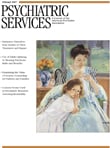One of the best medical texts I have ever read is definitely the Clinical Manual of Women's Mental Health . This paperback is small enough to ensure that it is within reach wherever clinicians at every training or practice level, including students in all health fields and in every specialty, may find themselves.
Divided into ten succinct yet factually inclusive chapters, the text is clear and to the point. Etiologies of treatments are explained, and the authors describe which treatments are based on scientific findings and clinical experience and why other treatments have not been recommended.
Each chapter is structured to address general principles, epidemiology, etiology, and psychological and risk factors of an illness along with treatments, often not only for women but also for male patients, which emphasizes similarities and contrasts between the sexes.
The material included does, as the authors state, offer the latest data on women's mental health in this, their third text on this subject.
Important issues related to women's age, ethnicity, pregnancy, and breast-feeding state are included. The authors' extensive clinical expertise—learned, researched, and practiced at the University of California, Los Angeles, School of Medicine Women's Life Center—is extraordinary and so clearly and usefully presented. Each chapter section is immediately summarized in a chart that is easy to understand and use. Once readers have read the text or section, they can then simply refer to the charts, knowing they have previously read the text and understand the basis for the clear medical recommendations.
For example, in Chapter 2 on premenstrual dysphoric disorder (PMDD), the differential diagnosis specifics are included to make the diagnosis between PMDD, premenstrual syndrome, and other concurrent psychiatric disorders. The authors always include a recommendation about why they have chosen a certain procedure to verify a diagnosis and what to avoid and what not to overlook. Charts are included for patients to complete and bring to their appointments to ensure a complete and correct record of daily symptoms.
By following these assessment structures, the authors explain how to avoid diagnostic errors. These thorough models always include psychiatric and other medical evaluations, laboratory tests, biologic family history, and psychosocial issues. Also, they incorporate questions about use of other prescription or over-the-counter medications, herbal or nutritional supplements, and substances of abuse—such as alcohol, nicotine, and caffeine. They offer a guide for nutritional assessment, such as for excessive salt intake or other nutritional deficiencies—such as vitamin B6, calcium, and magnesium. Finally, they provide recommendations about comprehensive treatment, emphasizing the importance of exercise, therapy—such as relaxation and psychotherapy, including cognitive-behavioral therapy—and psychoeducation of the patient, family, and partners.
Consistent explanation is given about why we need to know about and understand how different medications interact with women's metabolism and have hormonal impacts. Drug trials are explained too.
This superb, specific, and succinct manual is comprehensive, thoughtfully inclusive, and thought provoking. Finally, recommendations always include excellent explanations along with statements that knowledge is incomplete. Pros and cons of different treatments are specified, as well as needs for further research. Summaries consistently follow explanations. Every clinician treating female patients must read this manual and always keep it at hand.

